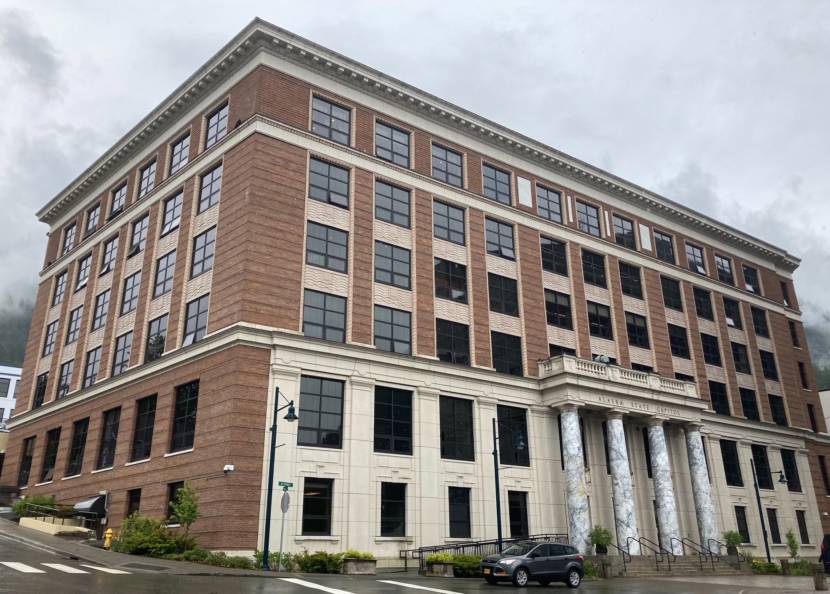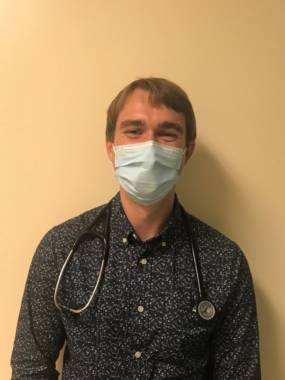
Alaskans’ participation in a medical school program is threatened by an impasse over how to pay for it. While lawmakers’ disagree over the program, students are worried that they will see large tuition increases.

Jesse Klejka was born and raised in Bethel, where his father is a doctor. He’s one of 20 Alaskans who are accepted each year into a program that allows Alaska to support medical education without having to operate a medical school. The students graduate from the University of Washington School of Medicine.
Klejka is in his second year of the program. He’s been interested in it since he was 9 years old.
“I was excited to hear about a program that puts special emphasis on training and retaining docs for Alaska, with assistance for those students who are interested in going down the path of rural medicine,” Klejka said.
He said it serves as a pipeline for doctors to serve in Bethel.
“Our hospital works to recruit talented individuals, but for many who aren’t from Alaska, it’s hard to call it home,” he said. “I’ve seen the same challenge exists across the state, with hospitals having to spend money on recruitment and travel docs to help fill shifts.”
Klejka is working in a clinical rotation in Ketchikan. Students in the program attend the University of Alaska Anchorage for a year and a half, then get clinical training at locations around Alaska and the other states.
On Friday, he was told that barring a resolution to the legislature’s budget dispute, his class will have to pay out-of-state tuition this year. While he doesn’t know what that difference will be; last year the average difference was $30,000. In addition, recruitment for Alaska students for the class that would start next year has stopped for now. First-year students, who start class on Aug. 17, will still pay in-state tuition this year.
The program is known as WWAMI. It’s named after the first letters of the names of the five states that participate — Washington, Wyoming, Alaska, Montana and Idaho.
For many years, the Legislature has voted to fund the program from an account that’s separate from the rest of the state budget, the Alaska Higher Education Investment Fund. But this year, the vote failed and students could have to pay tens of thousands of dollars more for tuition.
So students and others involved in health care in Alaska are asking lawmakers to agree to fund the program in the upcoming special session. They spoke Monday at a meeting of the working group of legislators weighing changes to the state budget for the long term.
Dr. Kristin Mitchell is a WWAMI faculty member who lives in Kenai and works in Soldotna. She moved to the state in 1998 to attend the program.
She told lawmakers that the state receives an impressive return on its investment, because WWAMI students tend to stay in the state.
“Alaska has a primary care shortage, and I know you’re aware,” she said. “And we urgently need to train excellent Alaskan physicians to provide medical care to Alaskans.”
It’s not just in primary care that Alaska has a problem. Mitchell said that most psychiatrists in the state are older than 60, as are nearly half of orthopedic and heart doctors.
She said the budget dispute is causing anxiety for students over how to pay for their education. And she said a similar budget dispute two years ago caused Alaska to lose future doctors.
“I fielded untold calls from students and families who wondered if they should accept offers of admission from other schools than the University of Alaska and from WWAMI,” she said. “And we lost the opportunity to train some outstanding students over that funding uncertainty.”
Kathryn Mitchell grew up in North Pole and chose WWAMI so she could stay in Alaska. She’s not related to Kristin Mitchell. Kathryn Mitchell is concerned that the funding problem will mean the end of the program.
“I ask you to think about your own experiences in health care and ask yourself what it could mean if you could have a doctor who is from your community, knows your environment and the needs of your region,” she said.
Not everyone who testified supported the program. Some who support higher permanent fund dividends, consider WWAMI a special interest.
Kerri Mullis of Delta Junction said the Legislature’s first priority should be putting the PFD in the state constitution and paying Alaskans the dividend amounts they would have received the last five years if the state followed the formula in a 1982 law. Including this year’s dividend, that adds up to more than $10,000.
“The WWAMI people shouldn’t be calling in tonight,” she said. “This is about people and their PFD. The WWAMI people shouldn’t even be allowed to talk tonight. And I just want you guys to do the right thing, which is to do the constitutional PFD and give us back our money.”
Some Republican House members who voted against restocking the fund that would pay for the program have said they still support it. But they want the funding to be paid along with the rest of the budget, not from a separate fund. Opponents of this proposal say it would require drawing more than planned from the permanent fund’s earnings reserve, and that this would open the door to spending down the permanent fund in the future.
Gov. Mike Dunleavy hasn’t put funding for WWAMI and similar programs on the agenda for the special session, which means lawmakers won’t be able to consider it. But he could add it to the agenda at any time before the session ends. The session is scheduled to start on Aug. 16 and can last up to 30 days.
